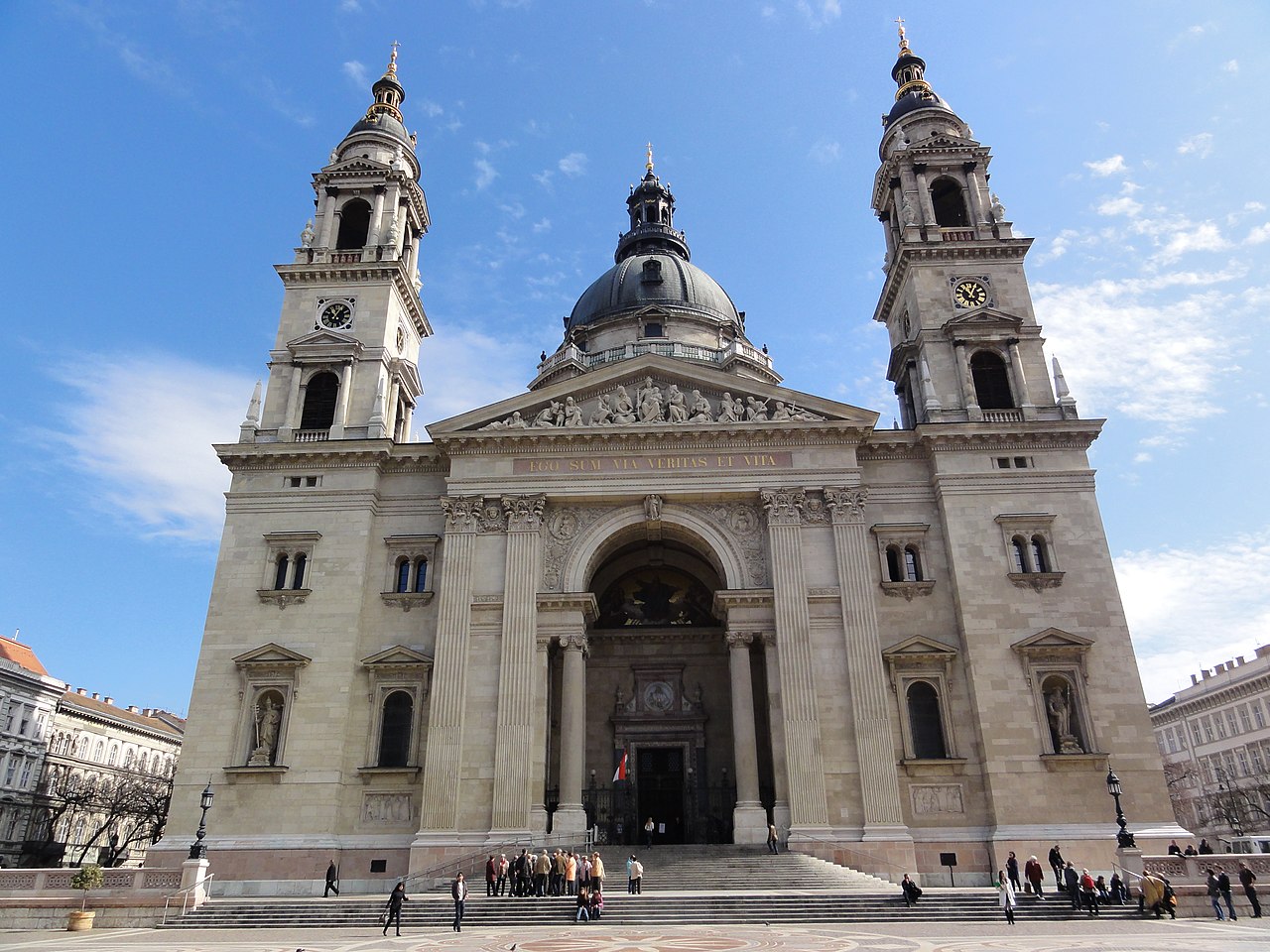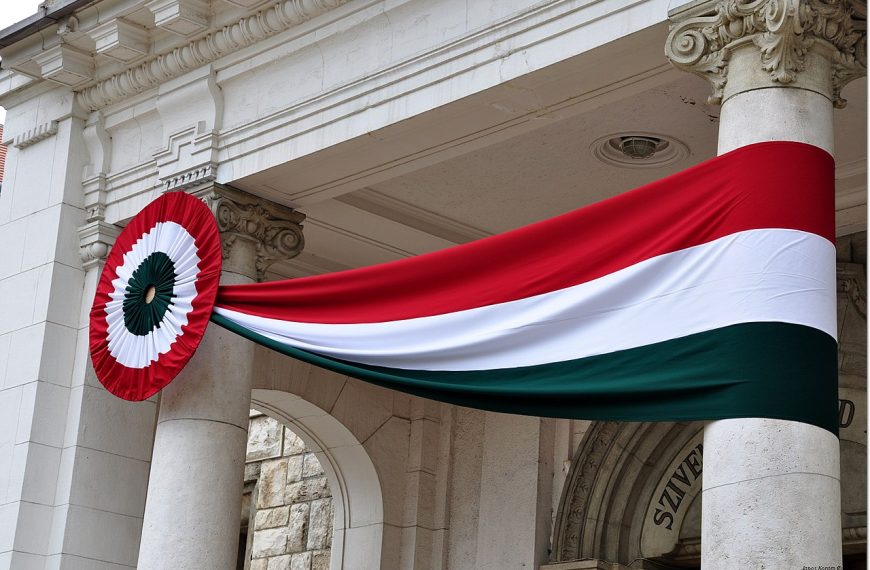Nestled at the heart of Budapest, St. Stephen’s Basilica stands as a testament to divine artistry and human ingenuity. Dedicated to Hungary’s first king, this Roman Catholic edifice is not merely a place of worship, but a spiritual citadel that has witnessed the ebbs and flows of history.
Its neoclassical façade, crowned by a resplendent dome, invites visitors to explore the depths of its sacred halls. Adorned with intricate mosaics and awe-inspiring frescoes, the interior of the Basilica offers a serene haven, echoing the freedom of spiritual contemplation.
As patrons ascend to the panoramic dome, they are greeted by the city’s splendid vistas—a visual symphony of Budapest’s grandeur.
St. Stephen’s Basilica, with its architectural magnificence, remains a beacon of faith and a pinnacle of cultural heritage.
Key Takeaways
- St. Stephen’s Basilica is a symbol of national pride and freedom, representing the resilience of Hungary.
- The basilica’s historical significance is highlighted by its survival during World War II and its housing of important artifacts.
- Located near the Right Bank of the Danube, the basilica offers convenient accessibility to other World Heritage sights and attractions such as the Chain Bridge.
- Visitors can indulge in culinary delights in the area, including the legendary Gerbeaud Cafe and a vibrant culinary scene in district V.
Historical Significance
St. Stephen’s Basilica, named in honor of Hungary’s first monarch, stands as a profound testament to the nation’s history, having played a pivotal role in both religious and cultural realms since its inception. Nestled in the heart of Budapest, this architectural masterpiece, designed by József Kauser, exudes a neo-Renaissance style reflective of the grandeur and spirit of the era.
Conceived by the esteemed Miklós Ybl, its iconic form survived the substantial damage during World War II, a symbol of resilience and perseverance. The Basilica houses the revered Holy Right of St. Stephen, encapsulating the legacy of the first King of Hungary.
This hallowed edifice not only represents a place of worship but also stands as a beacon of national pride and freedom.
Architectural Highlights
Every aspect of St. Stephen’s Basilica’s design, from its grandiose façade to the intricacies of its interior, reflects a commitment to architectural excellence that beckons visitors to explore its sacred spaces. Here are some of the most captivating highlights:
-
Largest Church in Budapest: Its majestic presence in Stephens Square owes much to the vision of József Kauser, who designed the basilica with a harmonious Greek cross layout, ensuring both spiritual and architectural balance.
-
Artistic Mastery: The main entrance captivates with mosaics by Gyula Benczúr, leading to an interior adorned with statues of the twelve apostles and a breathtaking pipe organ, creating an aura of divine inspiration.
-
Panoramic Views: The cupola offers a unique opportunity for reflection and freedom, granting a 360° vista of the city skyline, symbolically lifting spirits towards the heavens above.
Artistic Interior
Upon entering St. Stephen’s Basilica, one is immediately enveloped by a breathtaking array of artistic masterpieces that adorn every corner of its expansive interior. The hallowed space houses a rich tapestry of art treasures, each telling a story of faith and tradition.
| Location | Artwork | Artist |
|---|---|---|
| Lobby | Saint Stephen’s relief | Károly Senyei |
| Dome | Frescoes | Károly Lotz |
| Sanctuary | Mosaics and bronze reliefs | Gyula Benczúr, Ede Mayer |
| Altarpiece | Statue of St. Stephen | Alajos Stróbl |
The vibrant glass paintings by Miksa Róth cast a divine light, enhancing the spiritual ambiance. Alajos Stróbl’s statue of St. Stephen stands as a central figure amongst this splendor, while the six bells resonate with the music of the heavens, echoing through the basilica during organ concerts. The twelve apostles, immortalized in stone, witness the confluence of artistry and divinity within these sacred walls.
Sacred Relics Display
Transitioning from the artistic grandeur of its interior, St. Stephen’s Basilica also houses a profoundly significant Sacred Relics Display that includes the Holy Right Hand of Hungary’s first king, a focal point of spiritual veneration and historical significance. The basilica stands as a testament to the nation’s heritage, with the sacred relics display offering an intimate connection to the past.
Here are three key aspects of the Sacred Relics Display:
-
The Holy Right Hand: Whose mummified right hand is a revered artifact, symbolizing the enduring legacy of St. Stephen within the church.
-
Cultural Significance: Approximately 60% of visitors come specifically to witness this relic, underscoring its importance in Hungary’s royal and cultural narrative.
-
Spiritual Events: The relic is central during Holy Mass and special events, where it is showcased to the faithful, dedicated to St. Stephen’s memory and Hungary’s Christian identity.
Panoramic Dome Views
Having explored the sacred relics display, visitors to St. Stephen’s Basilica can elevate their experience by ascending to the dome’s observation deck for a spectacular 360-degree panorama of Budapest. From this vantage point, the Dome stands as a sentinel, offering an unobstructed view of Hungary’s capital. The eyes can sweep over a tapestry of architectural beauty, historic bridges, and the meandering Danube that bisects the city.
As the largest church in Hungary, the Basilica houses Hungary’s first king’s namesake, St. Stephen, and echoes his legacy through the grandeur of its construction. The dome, proudly bearing the title of one of Budapest’s tallest structures, is also home to Hungary’s largest bell, whose deep toll resonates with the freedom of the skies it touches.
Musical Celebrations
While the visual grandeur of St. Stephen’s Basilica’s dome captivates the eyes, its musical celebrations stir the soul, combining the art of sound with the sanctuary’s architectural magnificence. The harmony of music and architecture, envisioned by Károly Lotz’s artistic touch on the main facade, reaches its zenith in these moments.
Musical highlights at the basilica include:
-
Organ Concerts: Featuring renowned organ players like Miklós Teleki, the basilica’s organ recitals offer a divine auditory experience, dedicated to St. Stephen’s spiritual legacy.
-
Choir Performances: The basilica choir graces the air with ethereal sounds, especially during the summer Sundays, amplifying the sanctity of the space.
-
Festive Events: From the reflective Advent Festival to the jubilant Sweet Days Festival, the front of the basilica on Stephen Square becomes a stage for celebrating freedom through music.
Spiritual Services
Regularly, St. Stephen’s Basilica becomes a nexus for the faithful, offering spiritual services that resonate with the devout through a blend of liturgical traditions and sacred music. Nestled in István Square, the sanctified echoes inside St. Stephen’s Basilica invite the congregation of Lipótváros Parish and beyond.
Here, the Virgin Mary and the Lord on the Throne are venerated amidst murmurings of ‘Ego Sum Via,’ a guiding beacon for souls seeking solace. The Stephan bell, housed within one of the magnificent bell towers designed by József Hild, calls to worship with a voice that reverberates across the hearts of believers. Each toll a testament to the centuries-old narrative of faith and freedom, St. Stephen’s Basilica stands as an enduring spiritual fortress in Budapest.
Visitor Information
For those planning to visit St. Stephen’s Basilica, it is essential to book guided tours in English in advance to fully appreciate the historical and architectural significance of this ecclesiastical marvel. Nestled in the heart of Budapest, this basilica stands as a testament to Hungary’s rich cultural heritage, inviting visitors to embrace its grandeur.
Here are essential details for visitors:
-
Panoramic Views: Access to the cupola for breathtaking city vistas is available from April to October.
-
Admission: Adults are charged 3,200 HUF for the Panorama Lookout in the Dome.
-
Historical Significance: Home to several historical artifacts, including Hungary’s largest bell, the Great St. Stephen bell in the south tower.
Positioned within walking distance from the Right Bank of the Danube, a short walk from the World Heritage sights, the basilica offers a unique blend of spiritual and visual enlightenment.
Nearby Attractions
Adjacent to St. Stephen’s Basilica, visitors can explore the iconic Chain Bridge, a symbol of Budapest’s unity and a gateway to numerous historic sites.
Strolling through the heart of Budapest City, one can indulge in the sumptuous flavors of Rosa Ice Cream or imbibe in cultural festivities such as the International Eucharistic Congress and JuniBor Wine Festival.
The majestic Hungarian Parliament stands a short walk away, showcasing its Gothic Revival splendor by the Danube.
During winter, the district V transforms with a magical Christmas fair, where the air is fragrant with holiday spices.
Year-round, the legendary Gerbeaud Cafe and terraced cafes beckon travelers to savor moments of leisure and taste.
Each attraction around the Basilica offers a unique glimpse into the vibrant life and enduring spirit of Budapest.
Frequently Asked Questions
What Is the Significance of St Stephen’s Basilica?
St. Stephen’s Basilica stands as a monumental symbol of Hungary’s history, embodying cultural and religious significance while drawing global visitors to its remarkable architecture and panoramic vistas of Budapest.
Is It Worth Going Inside St Stephen’s Basilica?
Venturing inside St. Stephen’s Basilica is a journey into the heart of Hungarian sanctity. Its grandeur and spiritual aura offer a transformative experience, blending historical richness with architectural brilliance for an enlightening visit.
Is St Stephens Basilica Free?
St. Stephen’s Basilica entrance requires an admission fee of 2,000 HUF for adults, with concessions available for groups, students, and pensioners. The Panorama Lookout carries an additional charge for its breathtaking views.
What Is the History of the Basilica in Budapest?
From a theater of savagery to a sanctuary of sanctity, Budapest’s basilica embodies transformation. Founded in 1851, this architectural gem honors King St. Stephen, reflecting Hungary’s spiritual heritage through its grandeur and historical significance.
Conclusion
In the heart of Budapest, St. Stephen’s Basilica stands as a testament to architectural mastery and spiritual grandeur. This edifice not only encapsulates the nation’s devotion but also mirrors the celestial firmament with its dome, reminiscent of Brunelleschi’s feat in Florence.
It continues to echo the harmonious chords of history and faith, inviting pilgrims and art enthusiasts alike to partake in its sacred narrative. Here, the legacy of Hungary’s patron saint endures, eternally enshrined within its hallowed walls.





